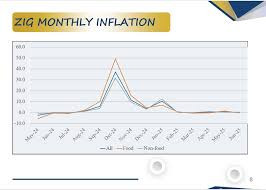
IN the past two weeks, Pan-African lender Shelter Afrique Development Bank (ShafDB) has scaled up its Zimbabwean strategy. But in this interview with our senior business reporter, Melody Chikono (MC), Gibson Mapfidza (GM), ShafDB’s chief business officer for Investment and Advisory Services, says he is also worried about Zimbabwe’s housing development strategy in view of the fast growing urban population. He shares his insights below:
MC: Take us through your housing quest in Africa?
GM: Shelter Afrique Development Bank’s vision is to provide a decent and affordable house for all in Africa. The bank has 44 member states in Africa. The continent’s total housing backlog stands at 52 million units. The continent’s 1,5 billion population is growing at 2,4% per annum. It is estimated that in 2050, 67% of the population will be living in urban areas as compared to the current 45%.
As such, ShafDB’s quest is to ensure that we work collaboratively with all stakeholders to scale-up and deliver houses for the booming African population.
We make interventions on both the supply side, through our Project Finance Group, and the demand side through the Financial Institutions Group (FIG). Whilst we have been focusing on the vertical improvements, we are also looking at collaborating with other development finance institutions (DFIs), governments,municipal authorities, states and countries to finance the horizontal bulk services through various structures like the public private partnerships (PPPs).
MC: Can you take us through the facilities that you have churned to Zimbabwe?
GM: Over the past 10 years, the board of ShafDB has approved cumulative facilities of over US$120 million and over US$90 million have been disbursed to various financial institutions in Zimbabwe.
We target to partner with strong covenant banks, Tier 1 and Tier 2 banks with a strong track record in real estate development financing.
- Pan-African lender warns Zim
Keep Reading
Given Africa’s growing infrastructure needs, it is important that we partner with banks that can deliver houses. CBZ Bank has demonstrated this since 2012, when we started working with them. We see their continued appetite in real estate development and hence our resolve to deepen our relationship with them.
Overall, Zimbabwe, over the years, has been one of our best performing countries.
MC: What is your work plan for Zimbabwe?
GM: Our plan is to continue to work with Tier 1 and Tier 2 banks with a proven track record of financing housing, real estate and urban development.
During the Sadc Industrialisation week, we managed to road show our new product, the Guarantee Structure, which we are using to finance developers through banks. We have perfected this product in West Africa, and currently working on adapting it in East and Southern African markets.
This would ensure that we further increase our footprint and market share across Africa through deploying new products in existing markets. We also engaged with the government of Zimbabwe to find ways of sovereign lending through the Infrastructure Development Bank of Zimbabwe, which we understand is the implementing arm of the Ministry of Housing and Social Amenities.
We also made a clarion call to the government of Zimbabwe to increase its current shareholding in ShafDB, which would ensure that we significantly up-scale our interventions towards resolving the 1,5 million housing backlog.
MC: How easy has it been for you to administer these facilities to Zimbabwe?
GM: As stated earlier, Zimbabwe has been one of the best performing and supportive member countries of ShafDB. Admittedly, we have been mainly deploying lines of credit through Tier 1 banks.
We intend to upscale and deploy new products as well as explore opportunities for project finance through working with Tier 1 developers, with a proven track record of delivery.
We appreciate the various efforts the country is making to further stabilise the economy. A stable economy helps attract foreign investment.
MC: You mentioned your four-pillar strategic plan. Can you reiterate that?
GM: We have grouped our product offering into four verticals.
The first one is the Financial Institutions Group. Essentially, this bouquet focuses on the demand side of the housing value chain. Here we deploy facilities towards the financing of mortgage finance, housing microfinance, finance housing funds, trade finance, and promoting the housing rental market and rent-to-own arrangements.
Secondly, we have the Project Finance Group which intervenes on the supply side of the housing and real estate value chain. We achieve this through private sector project finance, corporate loans, last mile infrastructure financing, student accommodation financing, and urban regeneration. We are also at the forefront of promoting alternative building technologies.
Thirdly, (we have) the Sovereign and Public-Private Partnerships. Within this bouquet, we stake housing corporations. We offer our expertise and advisory services to structure and mobilise funding for PPPs. We also engage with states to catalyse urban regeneration and advance social housing through resources mobilised from our fourth vertical.
Fourthly, we have the Fund Management Group. This vertical has seven housing investment themes that we use to mobilise investment finance, which we then deploy in line with the themes and requirements of the investors.
Specialised themes include green and climate funds, gender, SMEs (small and medium enterprises), Islamic finance, and refugees, migrants and diaspora, Our advisory services cut across all the four main bouquets.
Our 42 years of operating across Africa and our in-house experts enable us to offer tried and tested advisory services, especially to our member countries, on how they can up-scale housing and real estate delivery. We deploy our VIRAL model (Vision, Institutions, Regulations, Actors and Local Initiatives) to deep dive into a country’s property market and come up with insights that inform policy and attract investments.
MC: How do you see Zimbabwe benefiting from such?
GM: Zimbabwe is one of the many countries in Africa experiencing an above average rate of urbanisation. The last reported housing backlog of 1,5 million has been growing as the annual housing targets are currently not being met. There is also a need for increased investment in the horizontal bulk infrastructure. The country will also need to rethink housing and adopt vertical developments as land is a finite resource.
Encroaching on the green zone and farming land will have long term repercussions. In light of the foregoing, Zimbabwe would largely benefit from ShafDB’s advisory services offering in addition to the current financing of housing and real estate development.
MC: Do you have PPPs in the pipeline for Zimbabwe?
GM: We have been engaging with the Zimbabwe government on the possibility of sovereign lending through a PPP model. We seek to pursue this and which, if successful, would see a significant investment into Zimbabwe's housing market.
MC: You also said some organisations have failed to show the results of the credit lines you have extended
GM: The problem has not been prominent in Zimbabwe. We are, however, working with the Ministry of Housing to help us monitor housing delivery as we deploy these facilities. We are more driven by impact and, as such, we need to ensure that the projects pipeline shown by banks and developers, at application stage, materialise post approval and development.
We would welcome to see big and Tier 1 developers coming forward to partner with ShafDB under our Project Finance Group.
MC: How favourable is Zimbabwe as a market for mortgage lending?
GM: We understand that there have been challenges with the mortgage market in Zimbabwe. These challenges are not unique to Zimbabwe, as banks across the continent tend to behave the same way. We have been able to create off-take solutions in west and east Africa to ensure that once developers complete building; they do not keep the completed units for long as doing so will increase the cost and thus selling price of the housing units.
As we deepen our engagements with key actors across the housing value chain in Zimbabwe, we shall seek to ensure that we come up with off-take solutions that enable prospective house buyers to be able to buy their houses through acceptable and long-term structures.
MC: What is your outlook for the year?
GM: The global economy is stabilising, following several years of negative shocks. Global growth is projected to hold steady at 2,6% and 2,7% in 2025.
The global tensions and high interest rates will remain the major risks stifling growth. The tensions are causing volatile commodity prices and disruptions in global trade.
The elevated interest rates meant to tame inflation that came about through the post-Covid-19 quantitative easing, has seen reduced investment especially in Africa.
Global inflation is projected to moderate but at a slower clip than previously assumed, averaging 3,5% in 2024. Given the missed inflation target (2%), central banks in the major capital formation countries remain cautious in easing monetary policy.
A higher-for-longer path for interest rates would dampen global activity. It is anticipated, however, that the leading economies will look at loosening the liquidity tightening measures through a downward review of interest rates as seen through the secured overnight financing rate.
This would go a long way in encouraging infrastructure investment across Africa.
As for Africa, and particularly Zimbabwe, weak global demand will continue to weigh down export performance. The climate change risks and adverse weather events remain a key risk.
The significant investment in infrastructure and stable economic outlook should help in attracting more investment going into 2025.









